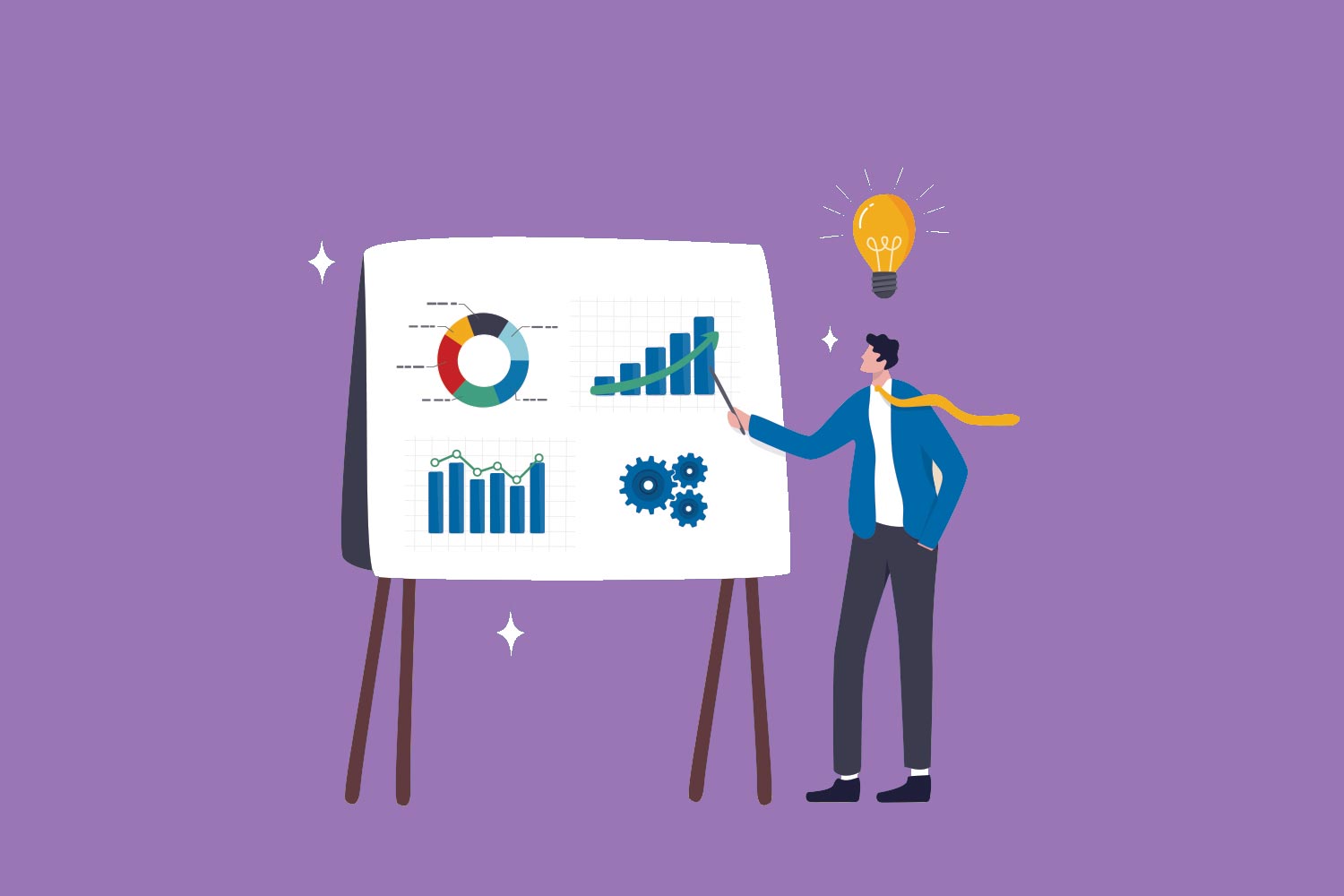A Case Study on Building a Nonprofit Donor Campaign
A case study that shows how valuable hard and soft data can be used to turn around declining contributions, and build stronger relationships with donors.

Your data is trying to tell you something. Are you listening?
“Our donors often thank us for the opportunity to give. It seems to give them hope that they might help other families who need support during what is often a challenging time.”
In the philanthropy field, we are good at collecting data about our donors including their personal and business relationships, capacity, and past support. But there is a lot more information about donor behavior in our databases, if we only look for it.
At HopeHealth Hospice & Palliative Care, we were searching for a solution to our dwindling memorial giving. Memorial gifts account for about 40% of all gifts to our organization and about 25% of HopeHealth’s annual philanthropic revenue. But that revenue was dropping—by nearly 10% between 2017 and 2020. To solve this problem, our staff looked carefully at patterns of giving within our own donor database.
Focusing on the Problem
HopeHealth has always enjoyed strong support from families and friends who are grateful for the expert and sensitive care of their loved ones. Most memorial donations, historically, were passive: monetary gifts made in lieu of flowers and the like. When we dug into the data, we discovered that about 90% were made in the first 12 months following a loss—in other words, as a direct response to the patient’s passing, not as a reaction to any active fundraising appeal. We also looked at the renewal rates we track annually. As we all know, donors who have already given are generally more likely to renew their giving, and the cost to acquire a new donor is much higher. We saw that the renewal rate for memorial donations was around 14%, while our annual fund renewal rate was around 65%. We decided to try to convert some one-time memorial donors to annual, consistent donors. Our goal was to increase giving and improve the renewal rate for these gifts.
Addressing these issues became our philanthropy department’s project during the first half of 2019 —and we tapped into the thinking of its five members. We needed emotional intelligence, high-level business thinking, analytical skills, pattern recognition, and creativity to increase revenue.
As a team, we decided to focus on developing three key strategies:
- 1) Timing of the appeal
- 2) Messaging
- 3) Stewardship process
We created a timeline and gave ourselves a few months for extensive research and data mining.
First Strategy: The Importance of Timing
First, we surveyed many of our peer hospice organizations. We found there was no consistent practice for grateful family solicitations. In fact, few of our colleagues believed that they had a truly successful model.
Culture and Constraints
One of the problems we ran into was historical: hospice in the United States is a young field, the oldest US hospice was founded in 1974. There are few documented best practices for hospice philanthropy and no aggregated data to review.
While hospital fundraisers can get daily admission reports, run a screening, and visit a hopefully-improving patient in their room within a day or two, our hospice patients are declining and terminal and are cared for in a variety of places: in their homes, nursing homes, assisted living facilities, and hospitals, with a small number in our 30-bed freestanding hospice center. An uninvited visit from a development officer into these private spaces is neither feasible nor welcome. In fact, conventional wisdom in hospice philanthropy indicates to not solicit families at all until the end of the bereavement period, which most organizations define as a full year from the patient’s death. However, our data told us that waiting to approach potential donors was absolutely the wrong strategy.
The Lightbulb Moment
To keep the issue in focus, memorial giving became a standing agenda item at our weekly staff meetings. One day, our highly skilled data-entry associate mentioned that, in her experience, families made gifts at about six weeks after a loss. We all know that good data-entry specialists notice patterns that fundraisers don’t necessarily see, so we decided to check this hypothesis.
We looked closely at past giving of memorial donors within our own database and found that the average grateful family gift arrived at 6.4 weeks after a loss. She was spot on.
When we analyzed memorial giving, we also realized that the rate of giving went down sharply within that first year and was almost nonexistent following it. Simply put, if families hadn’t made a gift by the end of the first year following their loved one’s death, it was highly unlikely that they ever would.
Second Strategy: The Medium is the Message
When we understood the best timing for the appeal, we moved on to messaging. We spent months carefully crafting a package that would be meaningful, sensitive, and welcome.
We reviewed reams of letters and notes from conversations with families. We discovered that, while many donors expressed thanks specifically for the care of their clinical team, they were primarily focused on how that care made them feel.
“I could not have cared for my husband the way you did.”
“You cared for me and my family as much as much as you cared for my mother.”
“We’re so grateful that this service exists in our community.”
Informed by this research, we were ready to wordsmith and design the package.
We created a simple, elegant card with a response device. It includes an expression of sympathy and invites families to remember their loved one with a gift. It also arrives at a time when our clients are mostly finished with the many tasks that accumulate in the weeks immediately following a death. At this point, they often are beginning to think about making a gift and our outreach was intended as a gentle reminder.
Third Strategy: It’s All in the Follow-through
Now that we had a plan, how would we move our prospects through the process? We wanted to be respectful of their loss and give them ample opportunity to make a gift when they were ready. On the other hand, we wanted to respect lack of interest, too.
We decided to send the test package to families who suffered a loss within 45-60 days. We would mail these packages to everyone listed as patient’s next of kin, removing from the list any family member who had already given a gift within that 45–60-day time frame. We mailed about 350 packages and waited. The response was surprising: 5.5% responded to the test with a gift—generally, a good direct mail response is about 4%. We were on to something.
Those who responded to the appeal received a warm acknowledgment letter from the CEO as well as a thank-you call from one of our trained stewardship volunteers. They joined the donor pool and moved through the annual giving cycle. Major donors as well as prospective donors were flagged for follow-up by a gift officer.
If there was no response, we’d send two additional mailings. After a third failed attempt, we removed the individual from the mailing list.
The Results are In
The results of our program have been profound. The slow decline in memorial giving has reversed itself, and the number of gifts from grateful families increased by 626%. The average gift from this cohort increased by 164%. Overall revenue increased by nearly 1,000%.
We’ve also discovered that our grateful family donors are three times more likely to give a second gift within the same year than other memorial donors. Grateful family donors are also twice as likely to make a second gift in year two.
Initially, we had some concerns about approaching families too soon, but we have not received one complaint. In fact, our donors often thank us for the opportunity to give. It seems to give them hope that they might help other families who need support during what is often a challenging time.
The Measure of Success
We now monitor our data annually to be sure that this program continues to be effective. We measure response rate, renewal rate, average gift amount, and total giving. Now three years into the program, we continue to see increases in all measures though we have made no major changes. There is always the temptation to redesign the package but, for the vast majority of our recipients, they are seeing it for the first time. If it ain’t broke, don’t fix it.
Through this program, we are growing a pool of loyal donors who care about our organization, who are inclined to continue to support us, and who may have major or planned gift potential.
Lessons Learned Along the Way
One of the main things we realized was that we did not need to hire an outside consultant. Instead, we had the expertise to solve the problem right in our department of five by tapping into the varied skill sets that our staff brought (and continue to bring) to the table.
We also did not just rely on our assumptions. Instead, we examined our own donor database to validate these hypotheses. With the future in mind, we also created simple reports to monitor progress and make sure our program continues to work.
Most importantly, we listened to what our donors were telling us by analyzing hard and soft data. Donor behavior informed both the timing and design of the appeal.
We would encourage you to look at your own donor data closely to see what it may be telling you, not just about previous but also about prospective donors. You don’t need special software programs or an outside consultant to begin to examine this wealth of information. Instead, all you need is a small group of dedicated and creative analysts. Chances are you already have them on your staff.
You might also like:
- Re-Imagining Fundraising: How Funder Education and Systemic-Change Approaches are Changing the Game
- The Million-Dollar Question: What Could Your Nonprofit Do if Money Weren’t an Issue?
- The Ultimate Guide to Nonprofit Fundraising in 2025
- The Best Route to Approaching Donors: Hand-Head-Heart
- Your Nonprofit Got its Grant. Now What?
You made it to the end! Please share this article!
Let’s help other nonprofit leaders succeed! Consider sharing this article with your friends and colleagues via email or social media.
About the Author
Articles on Blue Avocado do not provide legal representation or legal advice and should not be used as a substitute for advice or legal counsel. Blue Avocado provides space for the nonprofit sector to express new ideas. The opinions and views expressed in this article are solely those of the authors. They do not purport to reflect or imply the opinions or views of Blue Avocado, its publisher, or affiliated organizations. Blue Avocado, its publisher, and affiliated organizations are not liable for website visitors’ use of the content on Blue Avocado nor for visitors’ decisions about using the Blue Avocado website.









Brilliant article, brilliant strategy! Bravo, and thank you for sharing it.
Wow, thanks for your comments, Carla! We really appreciate it!